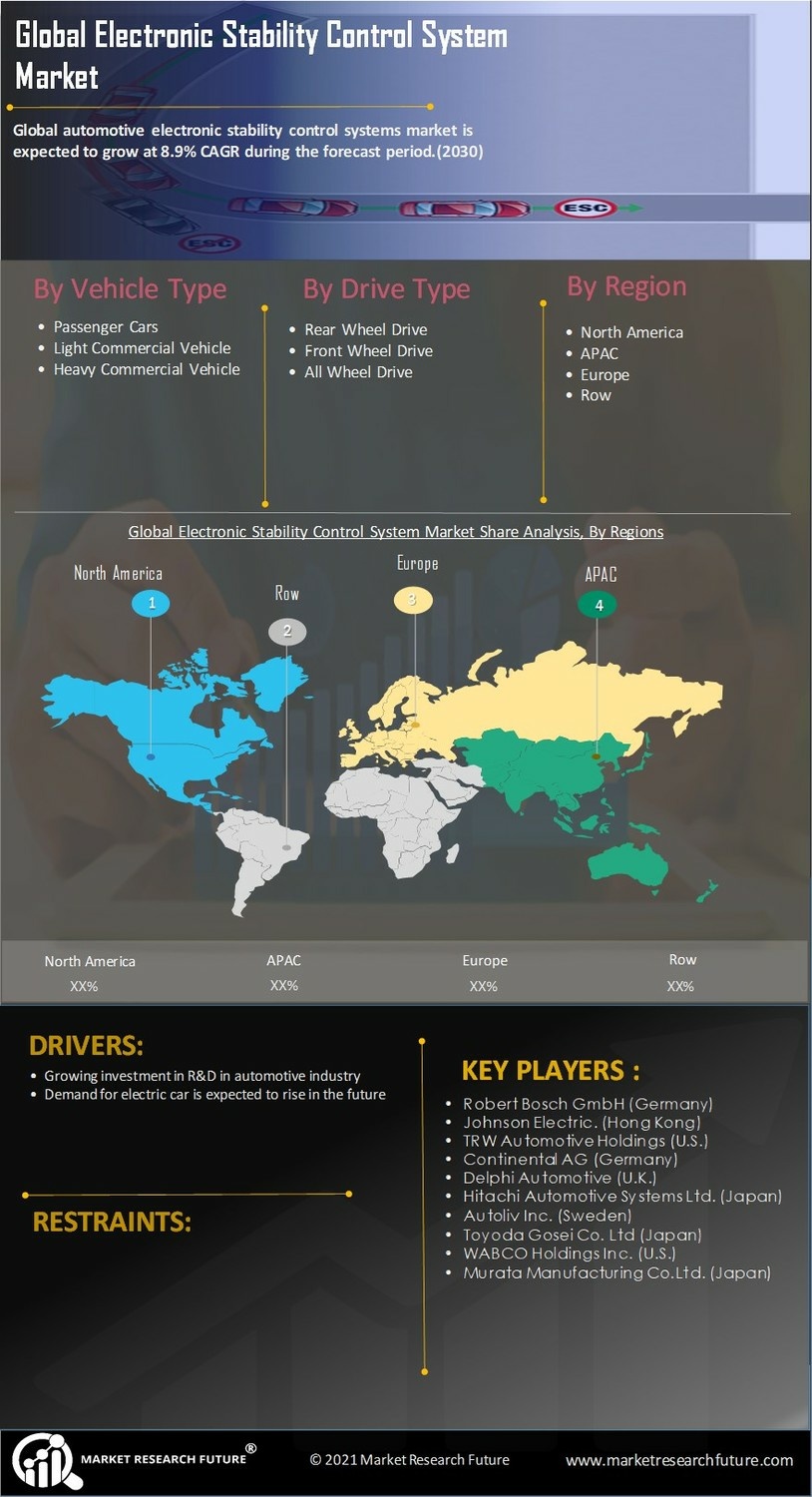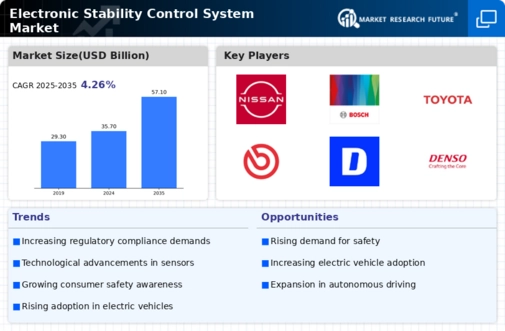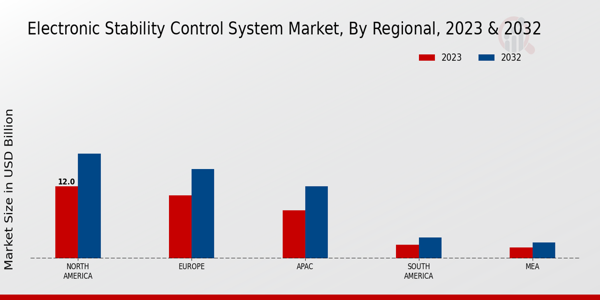Market Growth Projections
The Global Electronic Stability Control System Market Industry is projected to experience substantial growth over the next decade. With an estimated market value of 35.7 USD Billion in 2024, the industry is expected to expand at a CAGR of 4.38% from 2025 to 2035, reaching approximately 57.1 USD Billion by 2035. This growth is driven by various factors, including increasing vehicle safety regulations, rising consumer awareness, and technological advancements in automotive systems. The market's expansion reflects the growing importance of Electronic Stability Control systems in enhancing vehicle safety and stability.
Rising Consumer Awareness
Consumer awareness regarding vehicle safety features is on the rise, significantly impacting the Global Electronic Stability Control System Market Industry. As drivers become more informed about the benefits of ESC systems, including improved vehicle control and reduced risk of skidding, demand for these systems is likely to increase. Educational campaigns and safety ratings from organizations such as the Insurance Institute for Highway Safety have played a crucial role in this awareness. This trend is anticipated to bolster the market, contributing to its growth trajectory towards an estimated 57.1 USD Billion by 2035.
Growing Demand for Luxury Vehicles
The demand for luxury vehicles, which often come equipped with advanced safety features including Electronic Stability Control systems, is driving growth in the Global Electronic Stability Control System Market Industry. As consumers seek enhanced driving experiences and safety, manufacturers are increasingly incorporating ESC systems into their luxury models. This trend is evident in markets across North America, Europe, and Asia, where luxury vehicle sales are on the rise. The increasing adoption of ESC in these vehicles is expected to contribute to the market's growth, aligning with the projected value of 35.7 USD Billion in 2024.
Increasing Vehicle Safety Regulations
The Global Electronic Stability Control System Market Industry is experiencing growth driven by stringent vehicle safety regulations implemented by governments worldwide. These regulations mandate the inclusion of advanced safety features in new vehicles, including Electronic Stability Control (ESC) systems. For instance, in the United States, the National Highway Traffic Safety Administration has established regulations requiring ESC in all passenger vehicles. This regulatory push is expected to contribute to the market's projected value of 35.7 USD Billion in 2024, as manufacturers strive to comply with these standards and enhance vehicle safety, thereby reducing accident rates.
Technological Advancements in Automotive Systems
Technological advancements are propelling the Global Electronic Stability Control System Market Industry forward. Innovations such as integration with advanced driver-assistance systems (ADAS) and vehicle-to-everything (V2X) communication are enhancing the functionality of ESC systems. These developments not only improve vehicle stability but also contribute to overall road safety. As manufacturers invest in research and development to incorporate these technologies, the market is expected to grow at a CAGR of 4.38% from 2025 to 2035, reflecting the increasing importance of sophisticated safety features in modern vehicles.
Expansion of Automotive Industry in Emerging Markets
The expansion of the automotive industry in emerging markets is a significant driver for the Global Electronic Stability Control System Market Industry. Countries such as India, Brazil, and China are witnessing rapid growth in vehicle production and sales, leading to increased demand for safety features like Electronic Stability Control. As these markets mature, the adoption of ESC systems is likely to rise, driven by both regulatory requirements and consumer preferences for safer vehicles. This trend is expected to support the market's growth trajectory, contributing to an estimated value of 57.1 USD Billion by 2035.

















